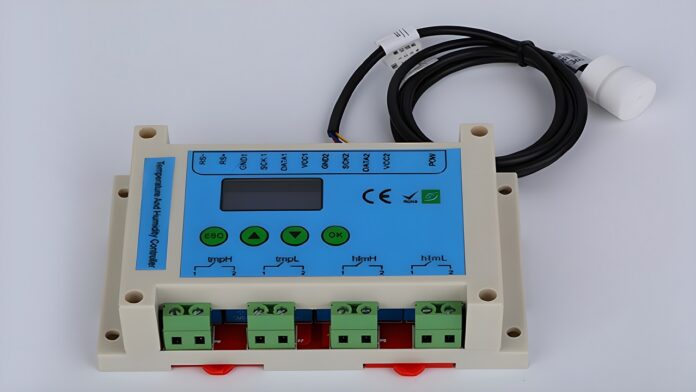Greenhouse cultivation has revolutionized modern agriculture, allowing for year-round cultivation of crops and providing a controlled environment that enhances plant growth and yield. A key factor that significantly impacts greenhouse productivity is temperature and humidity management. Integrating advanced temperature and humidity controllers has emerged as a pivotal solution in achieving optimal growing conditions, ensuring healthy plant development, and maximizing crop output.
The Vital Role of Humidity Controllers
Humidity controllers are critical in creating a conducive environment for plant growth within greenhouses as integral components of climate control systems. These controllers regulate the moisture content in the air, influencing transpiration rates, nutrient uptake, and overall plant health. Maintaining the right humidity levels is essential in the pursuit of greenhouse productivity.
Precise Regulation for Enhanced Growth
Temperature and humidity controllers work in tandem to maintain specific environmental conditions tailored to the needs of different plant species. The ability to finely tune these factors ensures that plants receive the ideal conditions for growth and development. When humidity controllers are effectively utilized, plants can thrive, displaying increased photosynthesis rates, enhanced nutrient absorption, and improved resistance to pests and diseases.
Optimal Germination and Root Development
Seeds require specific conditions to germinate successfully. Humidity controllers create the perfect microclimate for germination by providing consistent moisture levels in the soil and air. It leads to uniform and robust seedling emergence. Furthermore, controlled humidity levels support root development, allowing plants to establish strong root systems that anchor them securely in the growing medium.
Mitigating Stress and Improving Yield
Erratic humidity levels can subject plants to stress, negatively impacting growth and yield. With humidity controllers in place, stress caused by excessive moisture loss through transpiration can be minimized. Plants can allocate more energy towards growth, flower formation, and fruit production by maintaining an appropriate moisture balance in the air. This results in higher yields and better-quality crops.
Energy Efficiency and Resource Conservation
Modern humidity controllers are designed for efficiency, utilizing advanced sensors and automation technology to optimize the operation of greenhouse climate control systems. These controllers intelligently manage ventilation, heating, and cooling systems based on real-time humidity data. As a result, energy consumption is minimized, leading to cost savings and reduced environmental impact.
Remote Monitoring and Control
One of the most remarkable advancements in greenhouse technology is the integration of remote monitoring and control capabilities. Humidity controllers can be connected to a centralized host system, enabling growers to monitor and adjust humidity levels from a distance. This remote accessibility empowers growers to respond promptly to changing conditions, implement adjustments, and address potential issues without being physically present on-site.
Conclusion
Optimizing productivity is a constant pursuit in the dynamic world of greenhouse agriculture. Temperature and humidity controllers have emerged as indispensable tools in achieving this goal. These controllers enhance germination, root development, and overall growth by meticulously regulating humidity levels and creating an environment tailored to plant needs. The collaboration between advanced technology and plant biology, facilitated by humidity controllers, showcases the potential of innovation in transforming agriculture and securing a more sustainable food future. As the agricultural landscape continues to evolve, embracing the role of temperature and humidity controllers is not just a choice but a necessity to unlock the full potential of greenhouse productivity.





